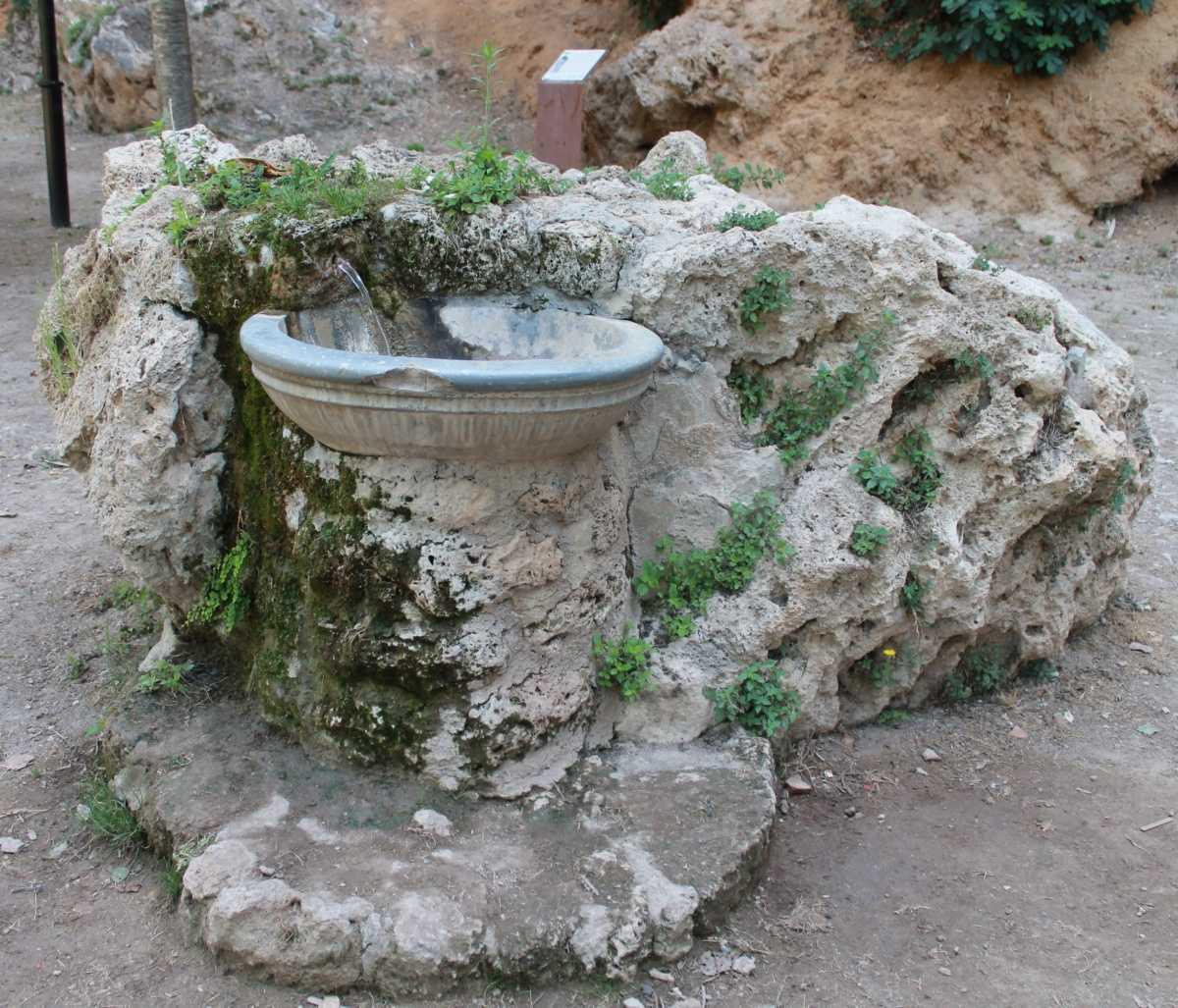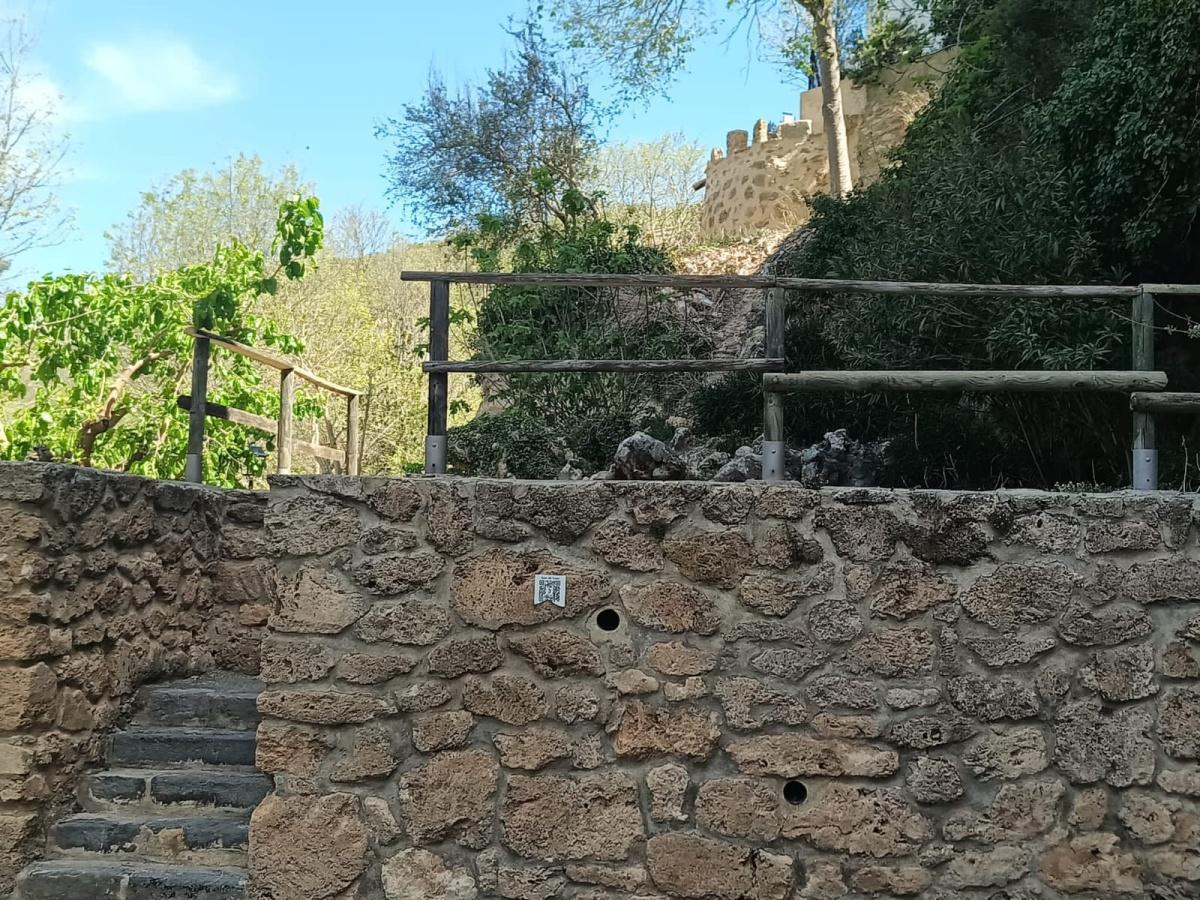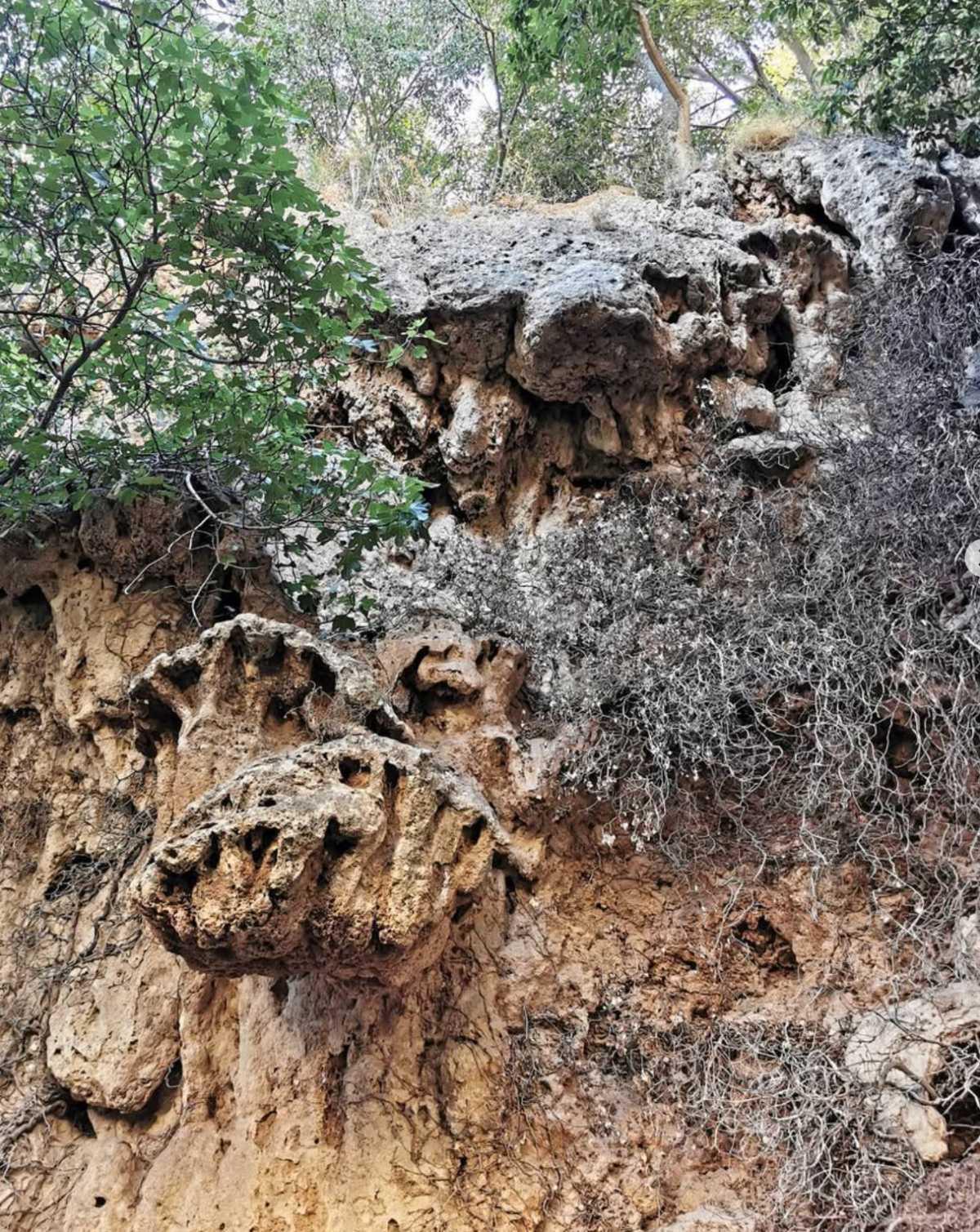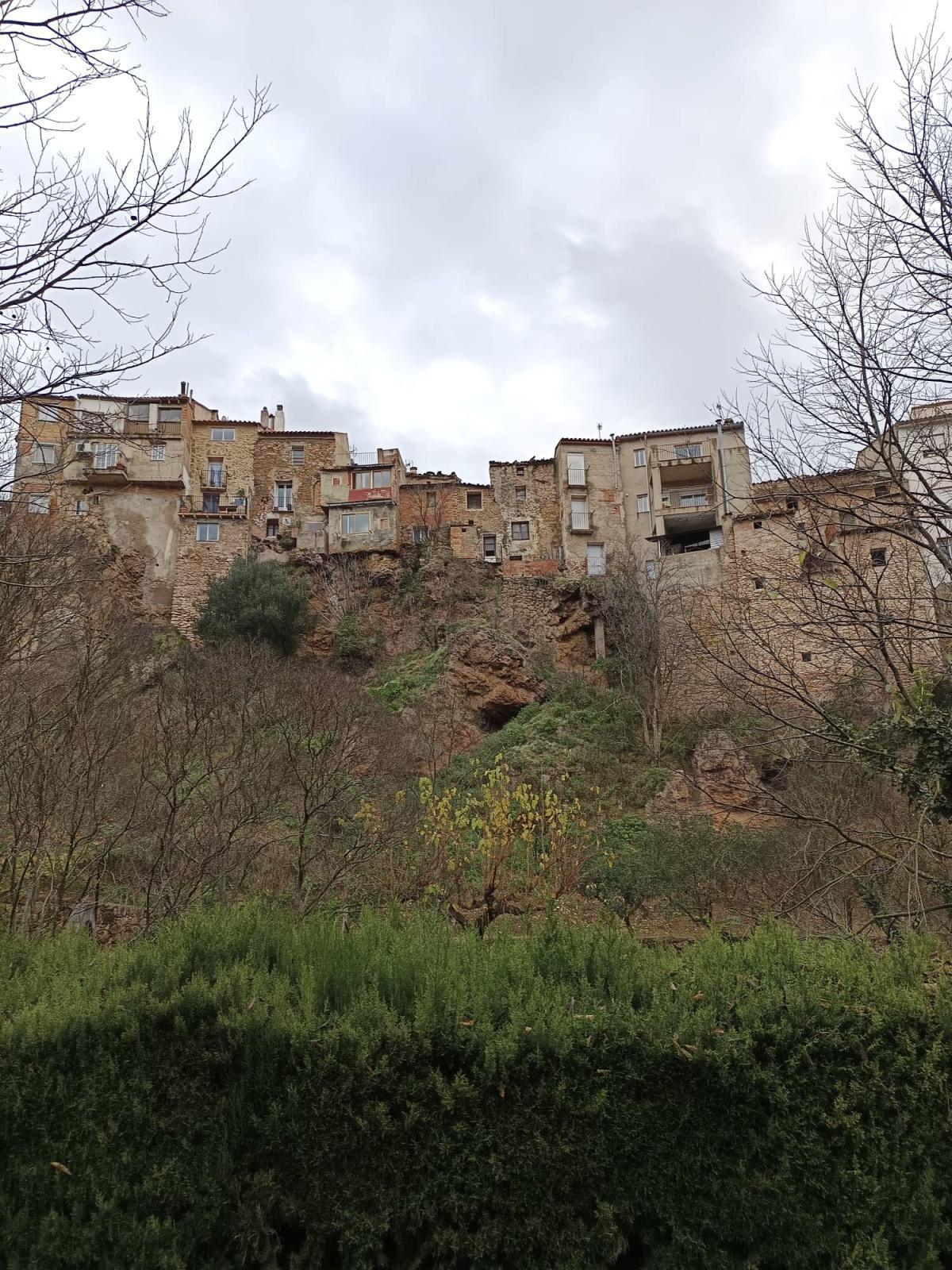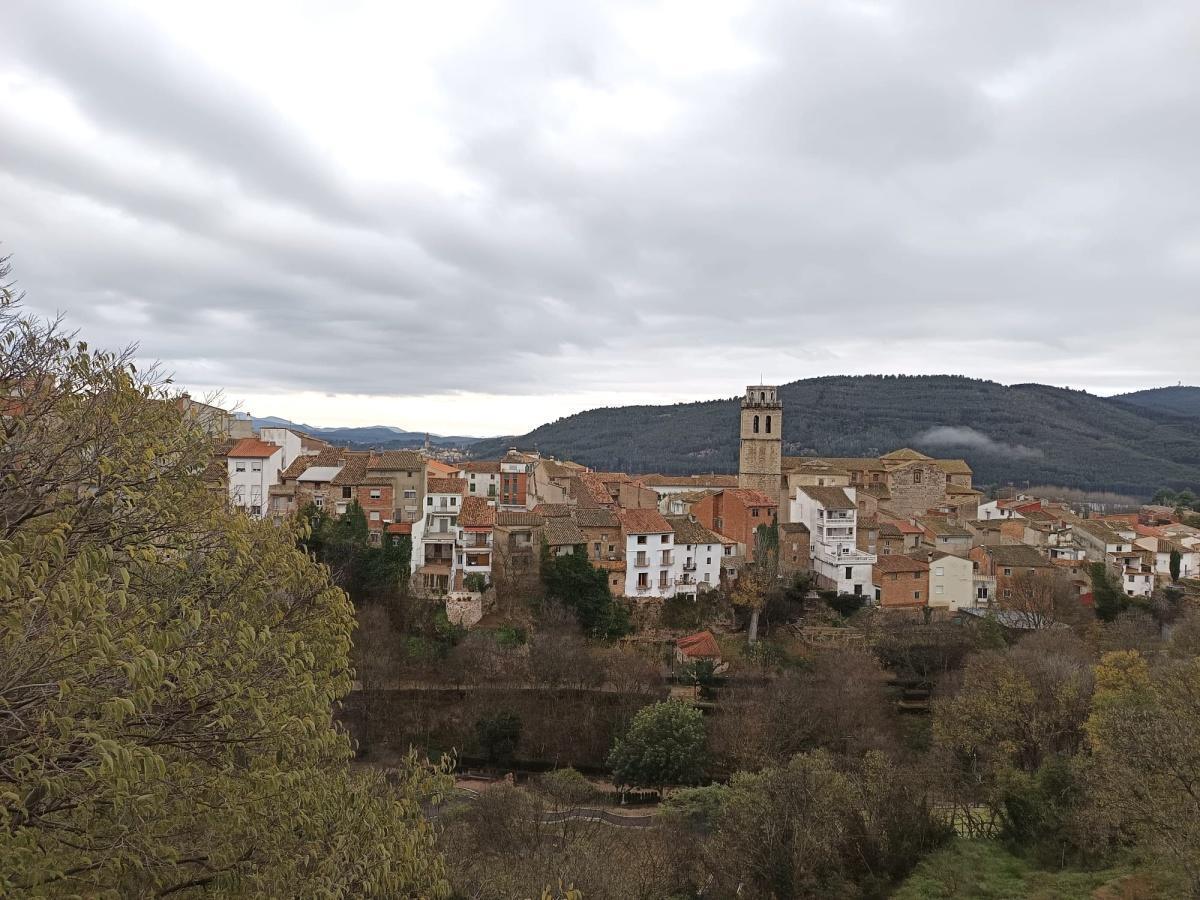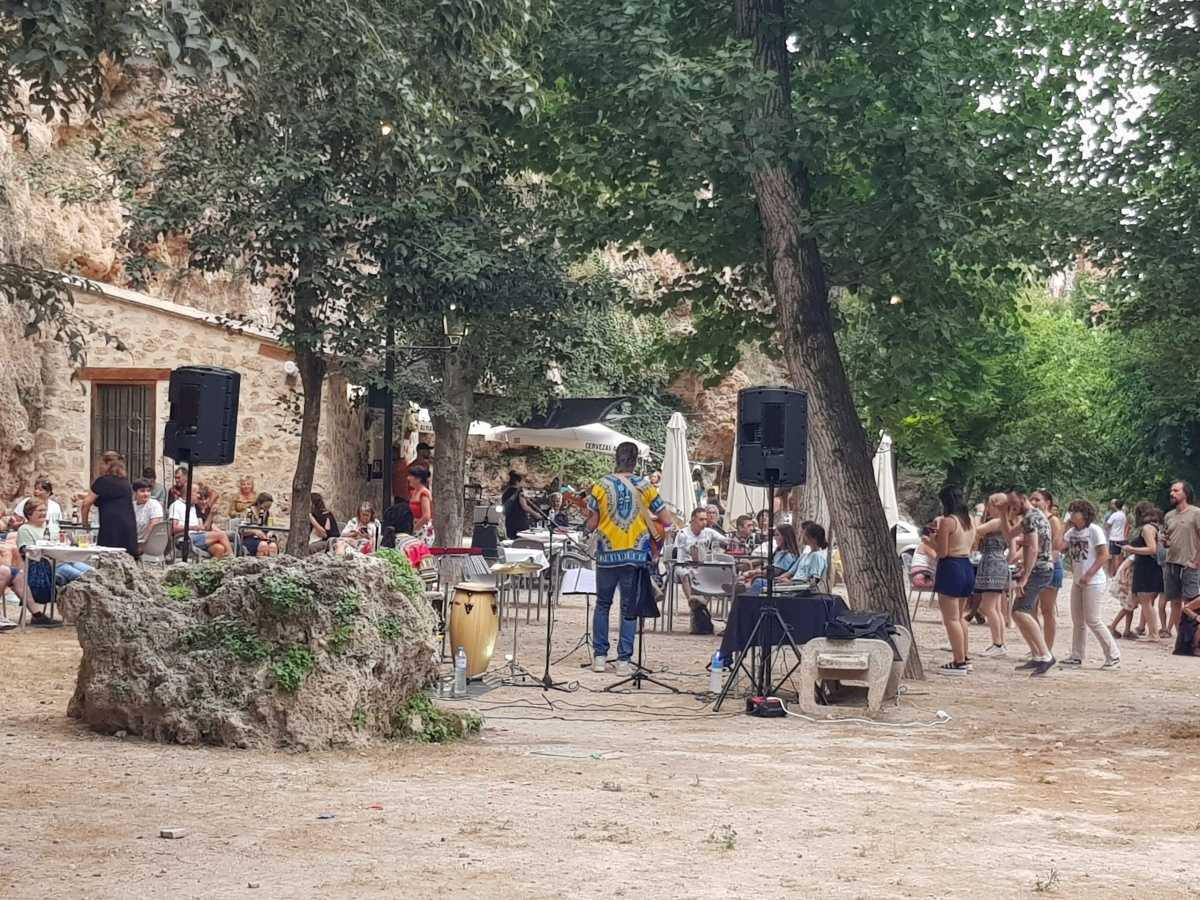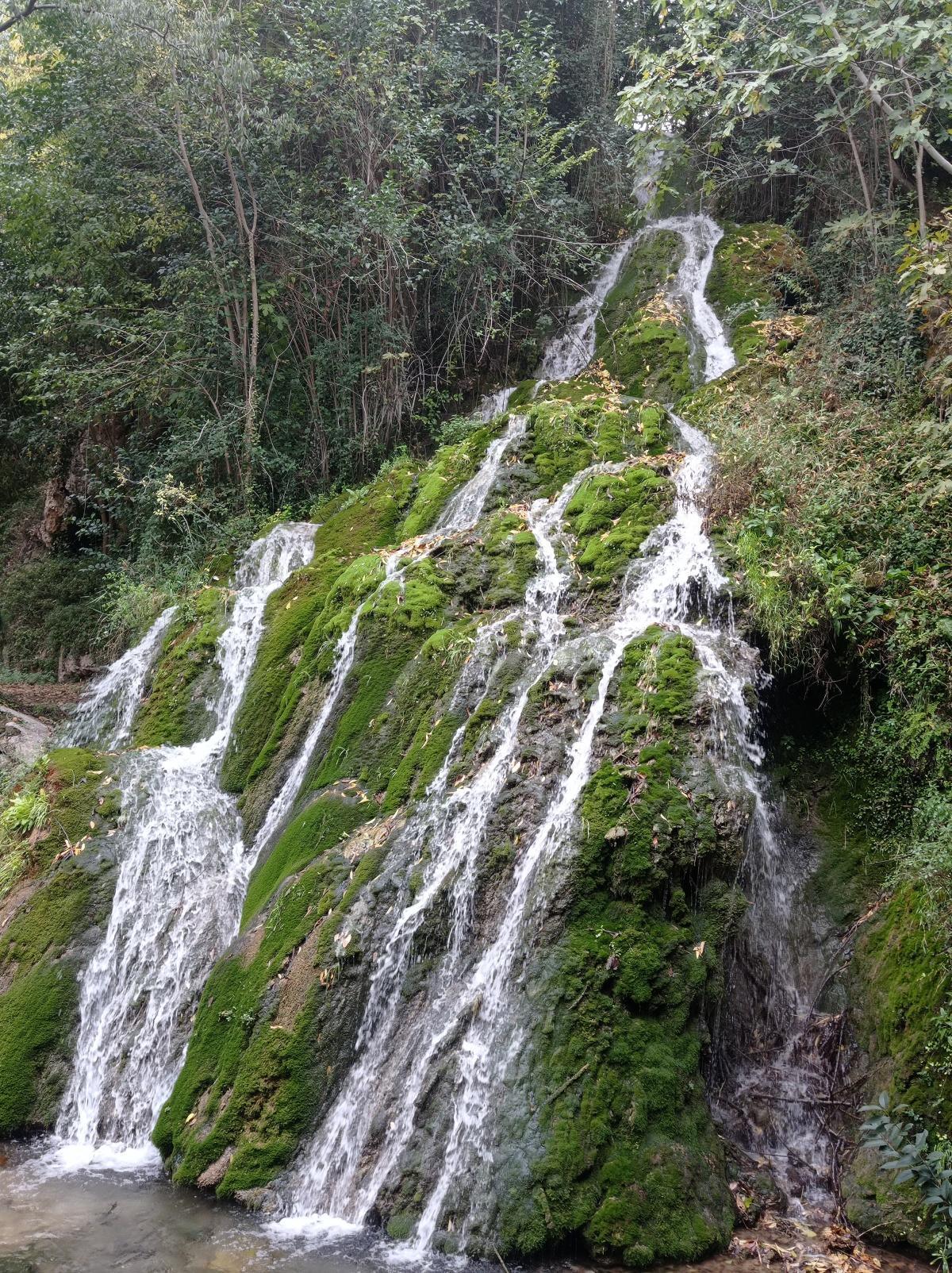
La Floresta
44 C. de Cazadores Viver
LA FLORESTA MUNICIPAL PARK
La Floresta is a natural and urban park of 40,000 square metres in size, located on the unique course of the Hurón ravine as it passes through the town. The action of the waters and the geological characteristics of the land, where sandstone (tosca) predominates, have shaped this unusual and breathtaking, almost magical place. It is an enormous hollow excavated in the ground, with very high rocky walls, covered with a varied and leafy vegetation, and crossed by beautiful waterfalls and cascades.
Historically, La Floresta was a wild, almost inaccessible place; like an enormous moat, it was a fundamental defensive element of the town, where the houses were built overlooking the fertile Hurón gorge, a fact that today gives Viver a picturesque urban and landscape profile.
But this was not always the case, it seems that this place hides the remains of a unique installation from Roman times, a freshwater fish hatchery. Such has been the influence of this fact on the place that the toponym of the municipality itself derives from this unique activity, and the historical coat of arms of the town bears a representation of fish on lines of water.
Over recent years, the municipality of Viver has invested heavily in adapting this space for public use and enjoyment. Today, it is an important natural, leisure and educational resource available to all citizens.
In the park you will find numerous caves and galleries, a large group of rough rocks where you can find hollows, holes, small shelters, caves and formations typical of this type of rock, including the occasional shelter that was used during the Spanish Civil War.
One notable feature is a tunnel approximately 28 metres long with masonry walls and a vaulted ceiling with vertical slabs, which runs parallel to the Hurón ravine and ends just before a small waterfall, before two rafts. Its interior end is currently closed, although water drips through and tree roots cross it vertically, limiting access to the end. Apparently, this tunnel, according to local accounts, forms part of an ancient network of underground tunnels that connected the village - others say that it was only used for irrigation - and that were used as a refuge for the population, such as Ferdinand of Aragon, Duke of Calabria and Viceroy of Valencia, who took possession of the village in the 16th century and used the galleries to protect himself from his enemies and escape through the forest.
The hanging houses, as indicated on one of the park's information panels, were houses built when the park was simply a ravine, and today they offer an unusual sight to visitors to the spot featured in our article. It is known that at least two of these hanging houses were advanced towers during the Carlist War, and today correspond to numbers 45 and 47 and 25 and 27 on Calle del Castillo.
In addition to offering silence, the sound of birds and water, and lush vegetation, the enjoyment of nature, it also offers sports facilities, a playground, and a kiosk.
The Floresta Waterfall: A Charming Spot Linked to Water and Agricultural Tradition
La Floresta, the urban park that captures hearts with its lush greenery, refreshing atmosphere and, of course, its waterfall. This spot, rich in both scenic and emotional value for locals and visitors alike, has become a true symbol of the town.
However, it’s important to note that the waterfall’s flow is not constant throughout the year. The water that cascades down it is part of a network of irrigation channels managed by the Viver Irrigation Community, and its circulation depends on several factors: rainfall, water availability, and above all, irrigation needs.
Viver has a deep-rooted agricultural tradition, and sustainable water management is essential to ensure crop irrigation and maintain environmental balance.
For this reason, there may be times when the waterfall is not flowing. This is not due to any malfunction or neglect, but rather a conscious decision to optimise an essential resource — especially during periods of scarcity.
We still warmly encourage you to visit La Floresta, a space that has much more to offer beyond its waterfall: shady pathways, centuries-old trees, rest areas, and a natural setting that connects with both the landscape and the history of Viver.
Thank you for your understanding, and for enjoying our natural and cultural heritage with a respectful and curious spirit.

